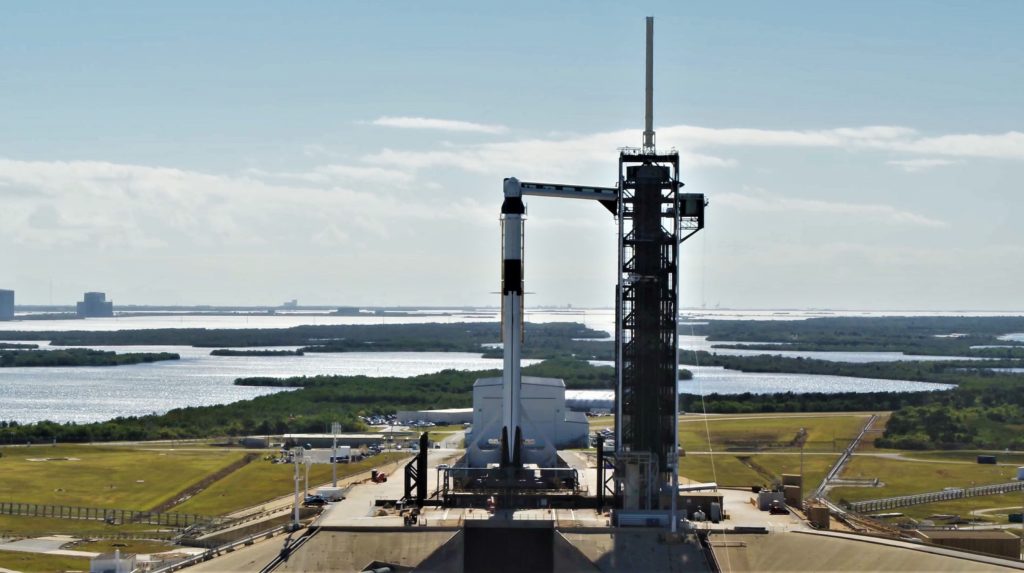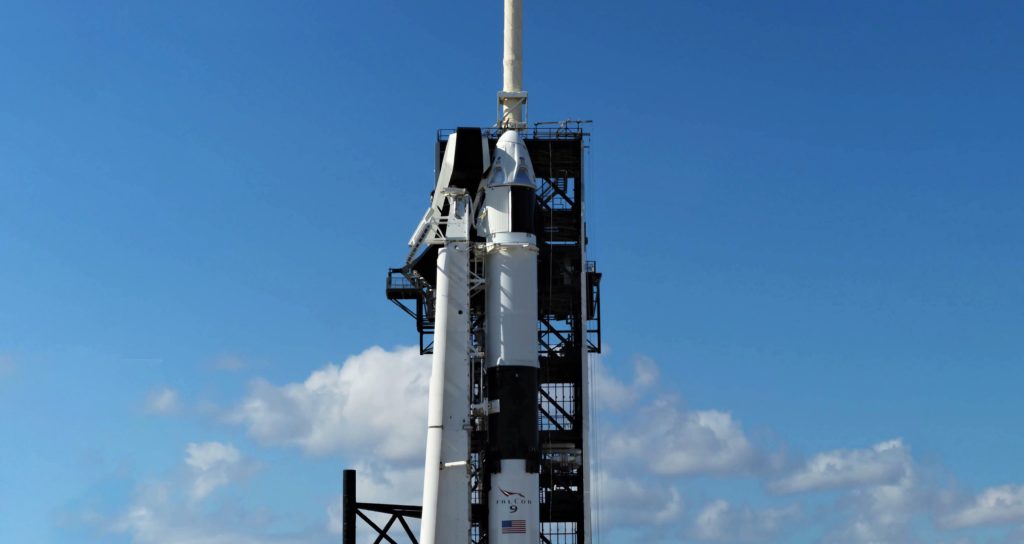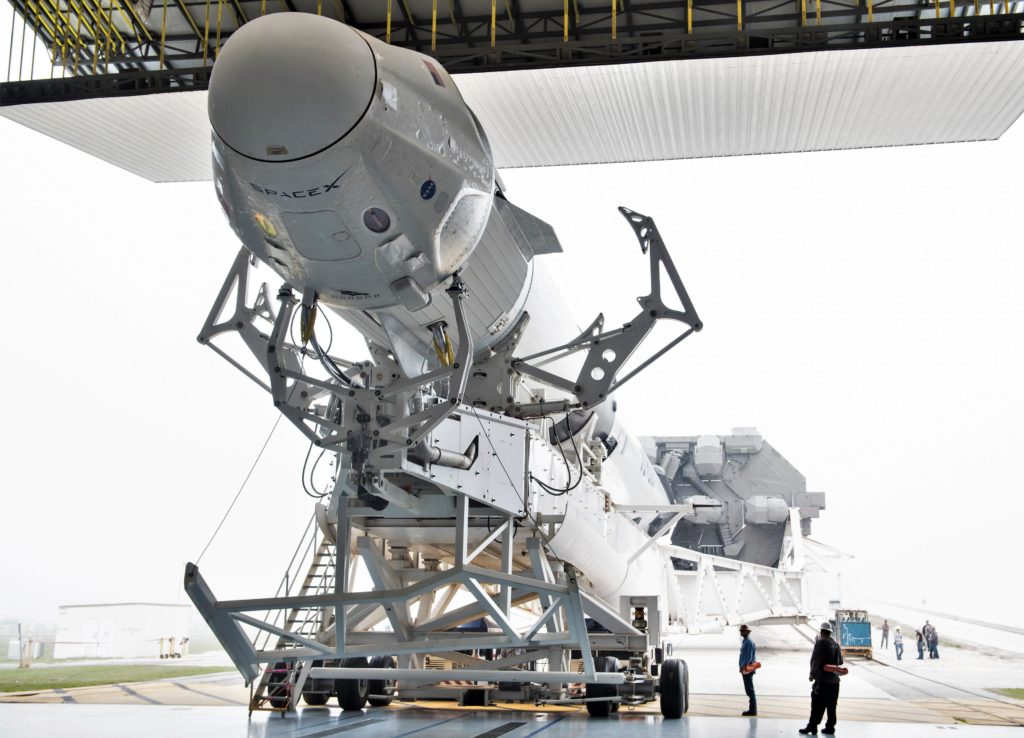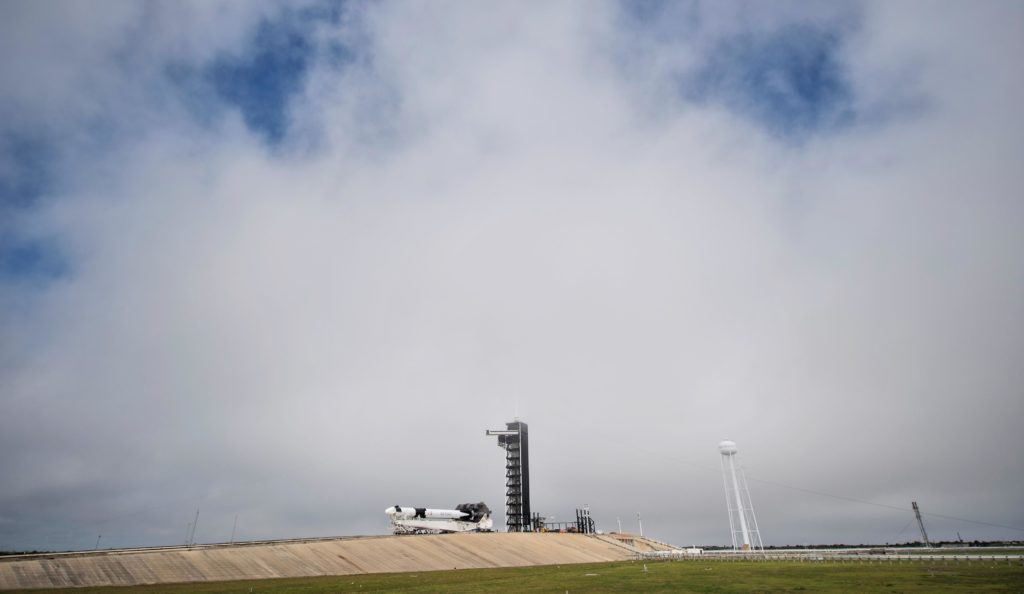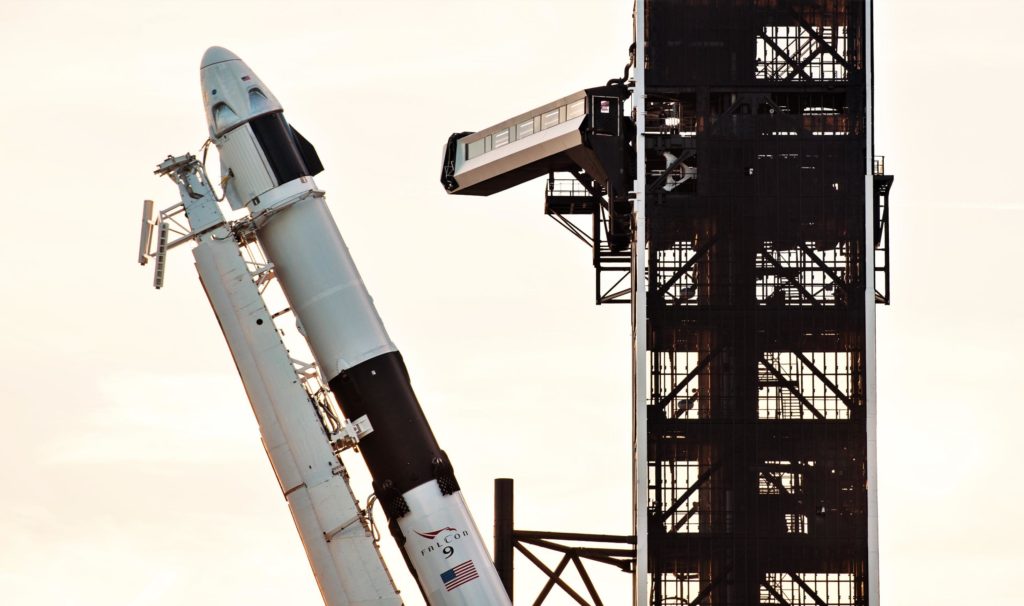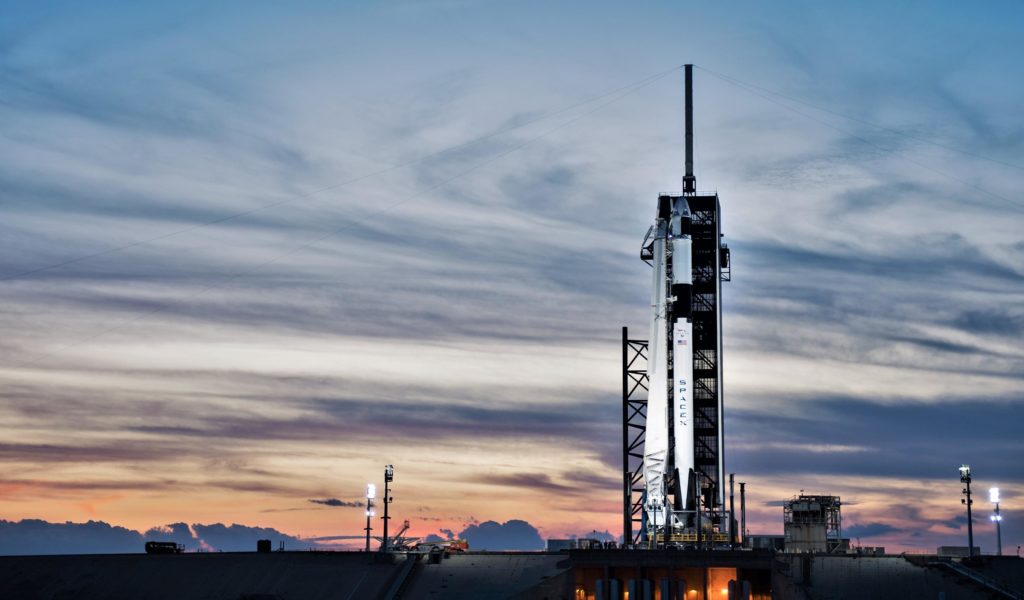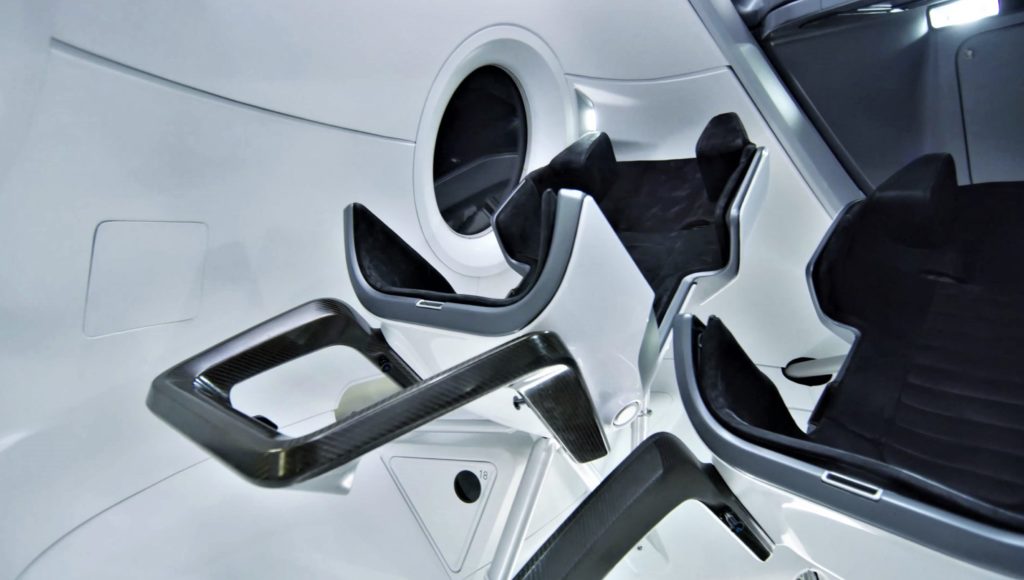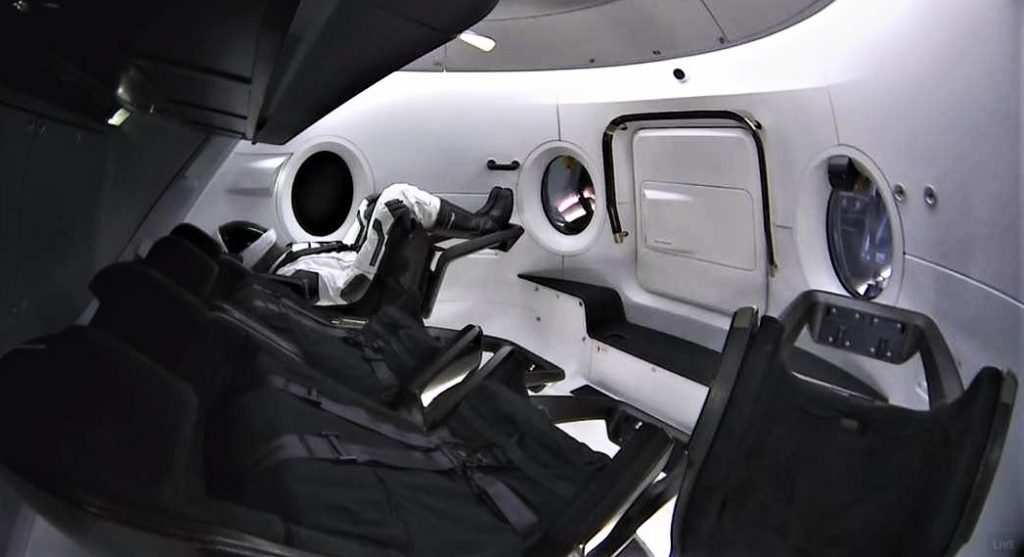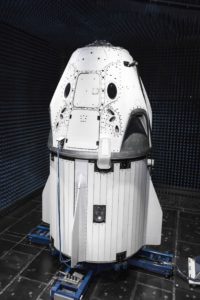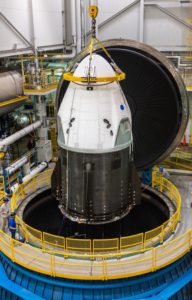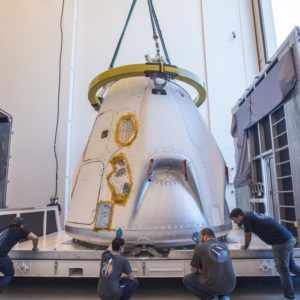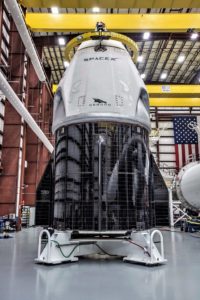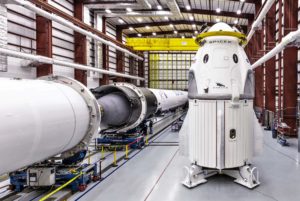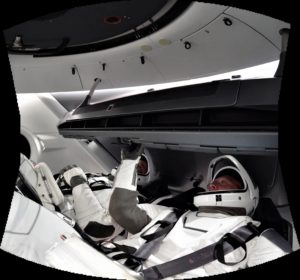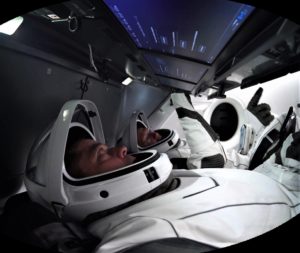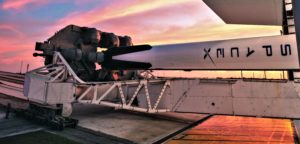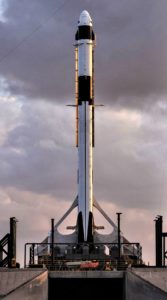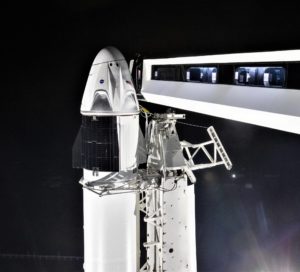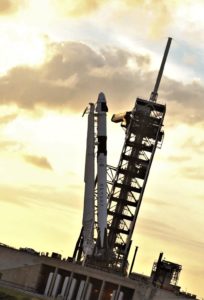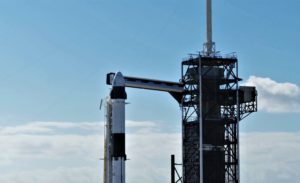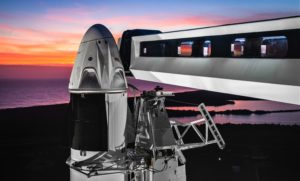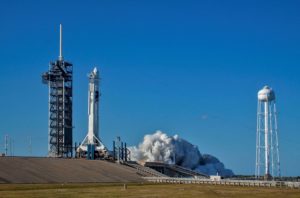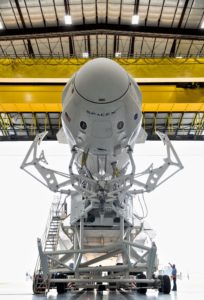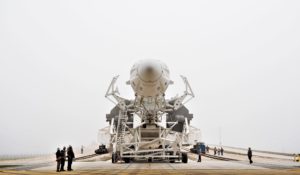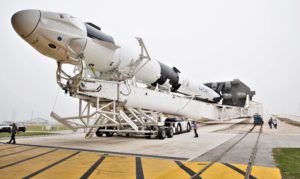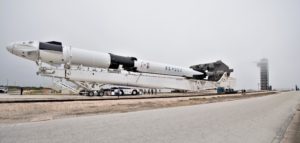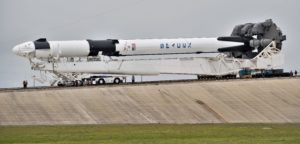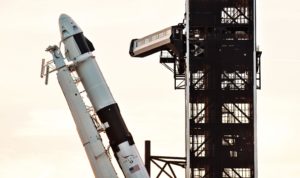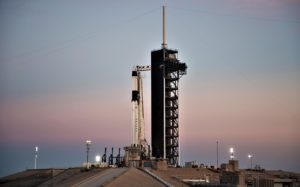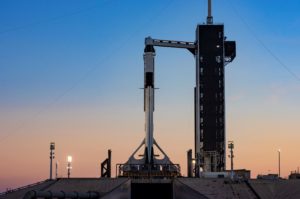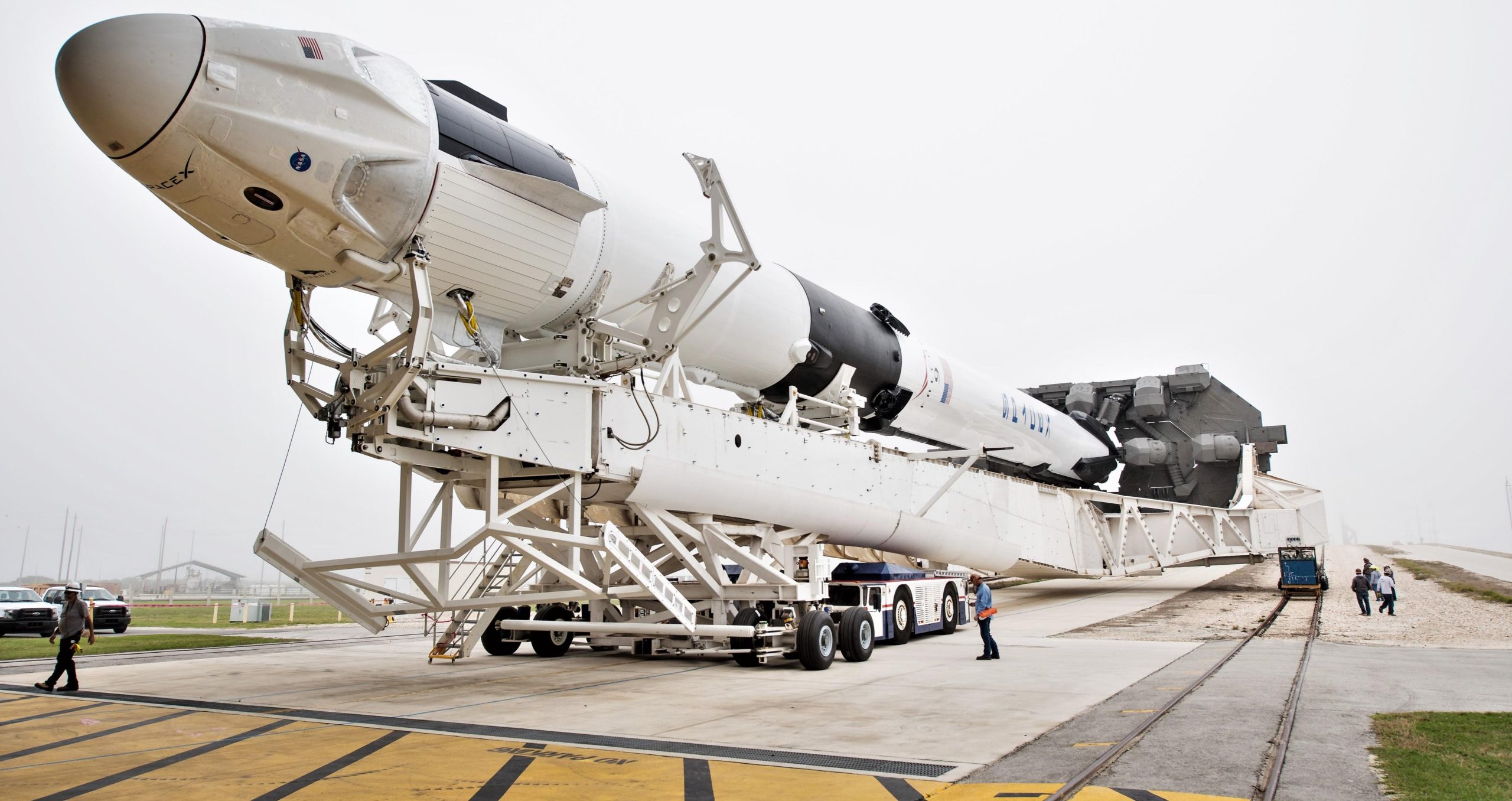
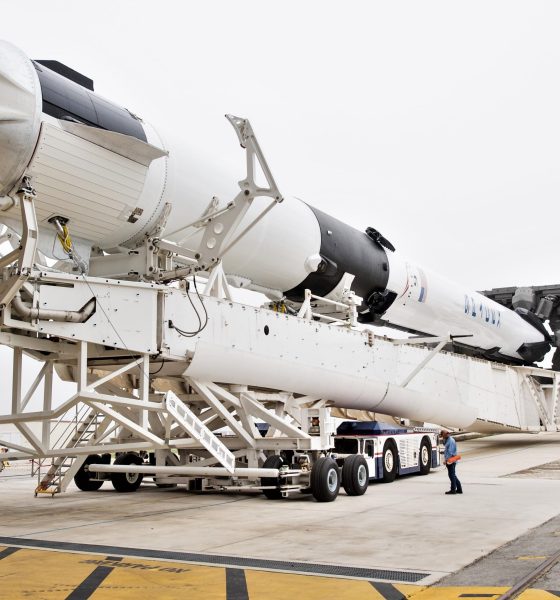
SpaceX
SpaceX’s space-bound Crew Dragon stars in spectacular preflight photos [gallery]
SpaceX and NASA are both participating in an exceptional media blitz on the verge of Crew Dragon’s orbital launch debut, sharing dozens of detailed photos and videos documenting the advanced spacecraft’s many years of development and its brief final voyage out to Launch Complex 39A (Pad 39A).
Scheduled to attempt its first launch at 2:48 am EST (07:48 UTC), March 2nd, CEO Elon Musk has already teased one significant part of a spectacular, hosted webcast SpaceX has prepared for the milestone launch, arguably the biggest step the company will have taken towards its foundational goal of “making humanity a multiplanetary species”. Riding along on the uncrewed demonstration mission will be a test dummy – Starwoman – known as Ripley, a close relative of the Starman character now orbiting the sun in deep space.
Crew Dragon and Falcon 9 rolled out to the launch pad ahead of the spacecraft’s first test flight. Liftoff targeted for 2:49 a.m. EST on March 2 pic.twitter.com/Dud93ZrkgH
— SpaceX (@SpaceX) February 28, 2019
Coming straight off of SpaceX’s February 21st Falcon 9 launch of commsat PSN-6 and Spaceflight’s GTO-1 rideshare, the contrast with the media presence behind Crew Dragon’s launch debut is stark. Regular SpaceX launches have grown into a routine distribution of official behind-the-scenes photos: one photo of Falcon 9 vertical on the pad after the rocket goes vertical, a hosted webcast with excellent live views of the mission, high-quality launch photos taken by SpaceX or contracted photographers, and – less frequently – a rare photo or two of the booster’s landing. NASA-led launches are a different story entirely, followed by USAF missions in a distant second place.
SpaceX and @NASA have completed thousands of hours of tests, analyses, and reviews in preparation for Crew Dragon’s first test flight to the @space_station pic.twitter.com/JvJqeoLKVy
— SpaceX (@SpaceX) February 28, 2019
Particularly so given that NASA has funded 99-100% of Crew Dragon’s costly development, SpaceX customers can typically reserve the right to request special views and even post photos of their own in launch or program contracts. As a civilian federal agency, NASA is largely obligated to share photos, insofar as they generally play nice with arms trafficking regulations like the US’ ITAR. For any number of reasons, SpaceX has become noticeably less keen on sharing photos of its milestones and more routine operations, regardless of whether or not a given subject is likely to raise the ire of ITAR.
While the company still shares far more than they technically have to (i.e. nothing), competitors like ULA tend to share far more even for extraordinarily security-conscious National Reconnaissance Office launches. Regardless of the company’s reasons, to which they have every right, the floodgates have been opened in the two or so months that have built up to Crew Dragon’s inaugural launch.
Ripley pic.twitter.com/Z9Ztram8Ai
— Elon Musk (@elonmusk) March 1, 2019
Combined, NASA and SpaceX have shared dozens of extremely high-quality photos of Falcon 9, Crew Dragon, and the general behind-the-scenes work required to make every launch (including this one) happen. SpaceX has also offered numerous rare glimpses into those processes, including rocket’s roll-out to Pad 39A and a brief 60-second overview featuring clips of much of the Crew Dragon development work that has been ongoing for 5+ years.
- Crew Dragon and Falcon 9 B1051 stand vertical at Pad 39A during preparations for a late January static fire test. (SpaceX)
- Crew Dragon and Falcon 9 B1051 stand vertical at Pad 39A during preparations for a late January static fire test. (SpaceX)
- Falcon 9 B1051 and Crew Dragon rolled out to Pad 39A on February 28th, roughly 60 hours before launch. (NASA)
- Falcon 9 B1051 and Crew Dragon rolled out to Pad 39A on February 28th, roughly 60 hours before launch. (NASA)
- A few hours later, Falcon 9 B1051 and Crew Dragon were lifted into the vertical position on SpaceX’s Transporter/Erector (T/E). (NASA)
- A SpaceX Falcon 9 rocket with the company’s Crew Dragon spacecraft onboard is seen after being raised into a vertical position on the launch pad at Launch Complex 39A as preparations continue for the Demo-1 mission, Feb. 28, 2019 at the Kennedy Space Center in Florida. The Demo-1 mission will be the first launch of a commercially built and operated American spacecraft and space system designed for humans as part of NASA’s Commercial Crew Program. The mission, currently targeted for a 2:49am launch on March 2, will serve as an end-to-end test of the system’s capabilities Photo Credit: (NASA/Joel Kowsky)
- A glimpse of Crew Dragon’s interior. (SpaceX)
- Starwoman – nicknamed Ripley – will be riding along on Crew Dragon’s debut launch. (SpaceX)
Onwards and upwards
Put simply, this mission may be the most important launch since SpaceX graduated from Falcon 1 to Falcon 9 almost nine years ago. Founded by Elon Musk with a single-minded purpose of creating cost-effective, reusable rockets that could allow or at least motivate humans to one day reach Mars, the pursuit of human spacecraft has been on the minds and agendas of Musk and SpaceX since the company’s 2002 formation. If Crew Dragon’s orbital debut is successful, SpaceX will have taken the biggest step yet in the direction of those lofty aspirations, thanks in large part to the funding and expertise bestowed upon the company through NASA’s Commercial Crew Program.
While SpaceX technically owns and operates it, Crew Dragon is a fundamentally NASA-owned vehicle with respect to fundamental capabilities and limitations baked into its design. The countless hundreds of thousands of hours of experience derived from developing Crew Dragon will, however, feed directly into Starship, a spacecraft that will very nearly be SpaceX’s and SpaceX’s alone, from a blank sheet of paper to Mars (fate permitting).
- The DM-1 Crew Dragon testing inside SpaceX’s anechoic chamber, May 2018. (SpaceX)
- SpaceX’s Demo Mission-1 Crew Dragon seen preparing for vacuum tests at a NASA-run facility, June 2018. (SpaceX)
- The first spaceworthy Crew Dragon capsule is already in Florida, preparing for its November 2018 launch debut. The same capsule will be refurbished and reflown as few as three months after recovery. (SpaceX)
- The first complete Crew Dragon is likely just days away from rolling out to Pad 39A atop Falcon 9. (SpaceX)
- An impressive view of Crew Dragon (DM-1), Falcon 9 B1051, and its upper stage. (SpaceX)
- DM-1 and Falcon 9 were greeted by an extraordinary – albeit mildly bittersweet – dawn during their first-ever trip out to Pad 39A. (SpaceX)
- Falcon 9 B1051 and Crew Dragon vertical at Pad 39A. (SpaceX)
- Crew Dragon shows off its conformal (i.e. curved) solar array while connected to SpaceX’s sleek Crew Access Arm (CAA). (SpaceX)
- Falcon 9 and Crew Dragon are raised vertical at Pad 39A ahead of a late January static fire test. (SpaceX)
- Crew Dragon and Falcon 9 B1051 stand vertical at Pad 39A during preparations for a late January static fire test. (SpaceX)
- Crew Dragon and Falcon 9 are ready for the spacecraft’s orbital launch debut, NET March 2nd. (SpaceX)
- SpaceX completed a successful static fire of the first Falcon 9 rated for human flight on January 24th. DM-1 is now NET March 2019. (SpaceX)
- Falcon 9 B1051 and Crew Dragon rolled out to Pad 39A on February 28th, roughly 60 hours before launch. (NASA)
- Falcon 9 B1051 and Crew Dragon rolled out to Pad 39A on February 28th, roughly 60 hours before launch. (NASA)
- Falcon 9 B1051 and Crew Dragon rolled out to Pad 39A on February 28th, roughly 60 hours before launch. (NASA)
- Falcon 9 B1051 and Crew Dragon rolled out to Pad 39A on February 28th, roughly 60 hours before launch. (NASA)
- Falcon 9 B1051 and Crew Dragon rollQDed out to Pad 39A on February 28th, roughly 60 hours before launch. (NASA)
- A few hours later, Falcon 9 B1051 and Crew Dragon were lifted into the vertical position on SpaceX’s Transporter/Erector (T/E). (NASA)
- A few hours later, Falcon 9 B1051 and Crew Dragon were lifted into the vertical position on SpaceX’s Transporter/Erector (T/E). (NASA)
- A few hours later, Falcon 9 B1051 and Crew Dragon were lifted into the vertical position on SpaceX’s Transporter/Erector (T/E). (NASA)
Check out Teslarati’s newsletters for prompt updates, on-the-ground perspectives, and unique glimpses of SpaceX’s rocket launch and recovery processes!

Elon Musk
Starlink achieves major milestones in 2025 progress report
Starlink wrapped up 2025 with impressive growth, adding more than 4.6 million new active customers and expanding service to 35 additional countries, territories, and markets.

Starlink wrapped up 2025 with impressive growth, adding more than 4.6 million new active customers and expanding service to 35 additional countries, territories, and markets. The company also completed deployment of its first-generation Direct to Cell constellation, launching over 650 satellites in just 18 months to enable cellular connectivity.
SpaceX highlighted Starlink’s impressive 2025 progress in an extensive report.
Key achievements from Starlink’s 2025 Progress
Starlink connected over 4.6 million new customers with high-speed internet while bringing service to 35 more regions worldwide in 2025. Starlink is now connecting 9.2 million people worldwide. The service achieved this just weeks after hitting its 8 million customer milestone.
Starlink is now available in 155 markets, including areas that are unreachable by traditional ISPs. As per SpaceX, Starlink has also provided over 21 million airline passengers and 20 million cruise passengers with reliable high-speed internet connectivity during their travels.
Starlink Direct to Cell
Starlink’s Direct to Cell constellation, more than 650 satellites strong, has already connected over 12 million people at least once, marking a breakthrough in global mobile coverage.
Starlink Direct to Cell is currently rolled out to 22 countries and 6 continents, with over 6 million monthly customers. Starlink Direct to Cell also has 27 MNO partners to date.
“This year, SpaceX completed deployment of the first generation of the Starlink Direct to Cell constellation, with more than 650 satellites launched to low-Earth orbit in just 18 months. Starlink Direct to Cell has connected more than 12 million people, and counting, at least once, providing life-saving connectivity when people need it most,” SpaceX wrote.
Elon Musk
Starlink passes 9 million active customers just weeks after hitting 8 million
The milestone highlights the accelerating growth of Starlink, which has now been adding over 20,000 new users per day.

SpaceX’s Starlink satellite internet service has continued its rapid global expansion, surpassing 9 million active customers just weeks after crossing the 8 million mark.
The milestone highlights the accelerating growth of Starlink, which has now been adding over 20,000 new users per day.
9 million customers
In a post on X, SpaceX stated that Starlink now serves over 9 million active users across 155 countries, territories, and markets. The company reached 8 million customers in early November, meaning it added roughly 1 million subscribers in under seven weeks, or about 21,275 new users on average per day.
“Starlink is connecting more than 9M active customers with high-speed internet across 155 countries, territories, and many other markets,” Starlink wrote in a post on its official X account. SpaceX President Gwynne Shotwell also celebrated the milestone on X. “A huge thank you to all of our customers and congrats to the Starlink team for such an incredible product,” she wrote.
That growth rate reflects both rising demand for broadband in underserved regions and Starlink’s expanding satellite constellation, which now includes more than 9,000 low-Earth-orbit satellites designed to deliver high-speed, low-latency internet worldwide.
Starlink’s momentum
Starlink’s momentum has been building up. SpaceX reported 4.6 million Starlink customers in December 2024, followed by 7 million by August 2025, and 8 million customers in November. Independent data also suggests Starlink usage is rising sharply, with Cloudflare reporting that global web traffic from Starlink users more than doubled in 2025, as noted in an Insider report.
Starlink’s momentum is increasingly tied to SpaceX’s broader financial outlook. Elon Musk has said the satellite network is “by far” the company’s largest revenue driver, and reports suggest SpaceX may be positioning itself for an initial public offering as soon as next year, with valuations estimated as high as $1.5 trillion. Musk has also suggested in the past that Starlink could have its own IPO in the future.
News
SpaceX shades airline for seeking contract with Amazon’s Starlink rival

SpaceX employees, including its CEO Elon Musk, shaded American Airlines on social media this past weekend due to the company’s reported talks with Amazon’s Starlink rival, Leo.
Starlink has been adopted by several airlines, including United Airlines, Qatar Airways, Hawaiian Airlines, WestJet, Air France, airBaltic, and others. It has gained notoriety as an extremely solid, dependable, and reliable option for airline travel, as traditional options frequently cause users to lose connection to the internet.
Many airlines have made the switch, while others continue to mull the options available to them. American Airlines is one of them.
A report from Bloomberg indicates the airline is thinking of going with a Starlink rival owned by Amazon, called Leo. It was previously referred to as Project Kuiper.
American CEO Robert Isom said (via Bloomberg):
“While there’s Starlink, there are other low-Earth-orbit satellite opportunities that we can look at. We’re making sure that American is going to have what our customers need.”
Isom also said American has been in touch with Amazon about installing Leo on its aircraft, but he would not reveal the status of any discussions with the company.
The report caught the attention of Michael Nicolls, the Vice President of Starlink Engineering at SpaceX, who said:
“Only fly on airlines with good connectivity… and only one source of good connectivity at the moment…”
CEO Elon Musk replied to Nicolls by stating that American Airlines risks losing “a lot of customers if their connectivity solution fails.”
American Airlines will lose a lot of customers if their connectivity solution fails
— Elon Musk (@elonmusk) December 14, 2025
There are over 8,000 Starlink satellites in orbit currently, offering internet coverage in over 150 countries and territories globally. SpaceX expands its array of satellites nearly every week with launches from California and Florida, aiming to offer internet access to everyone across the globe.
Currently, the company is focusing on expanding into new markets, such as Africa and Asia.
